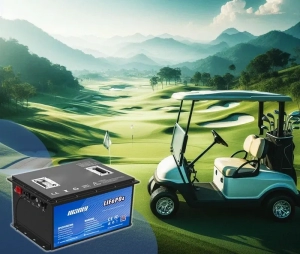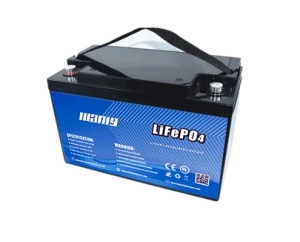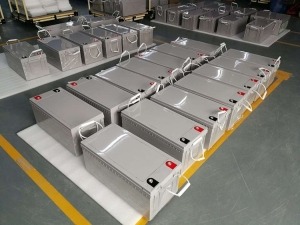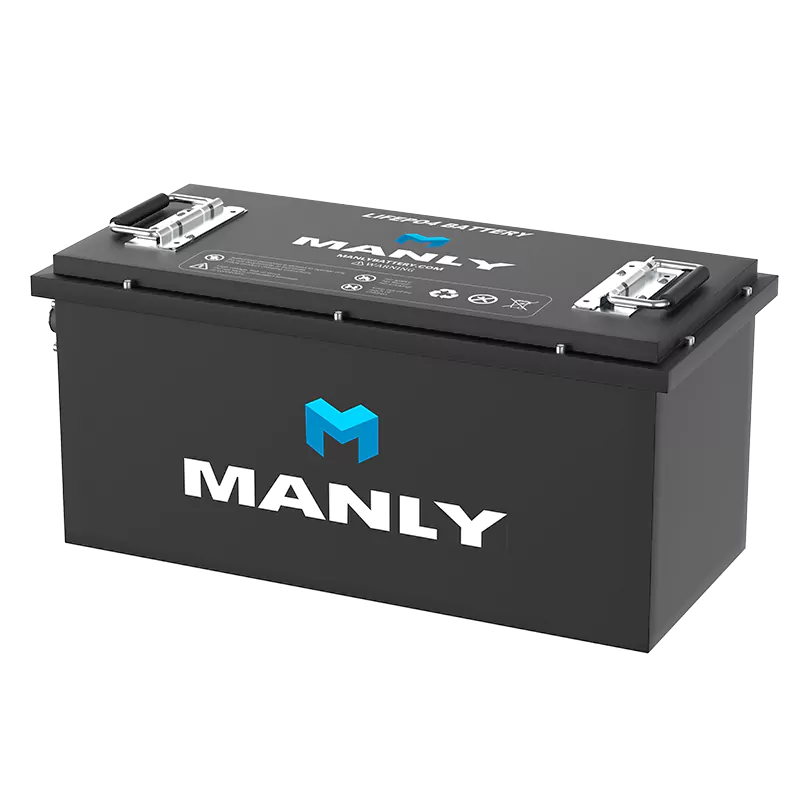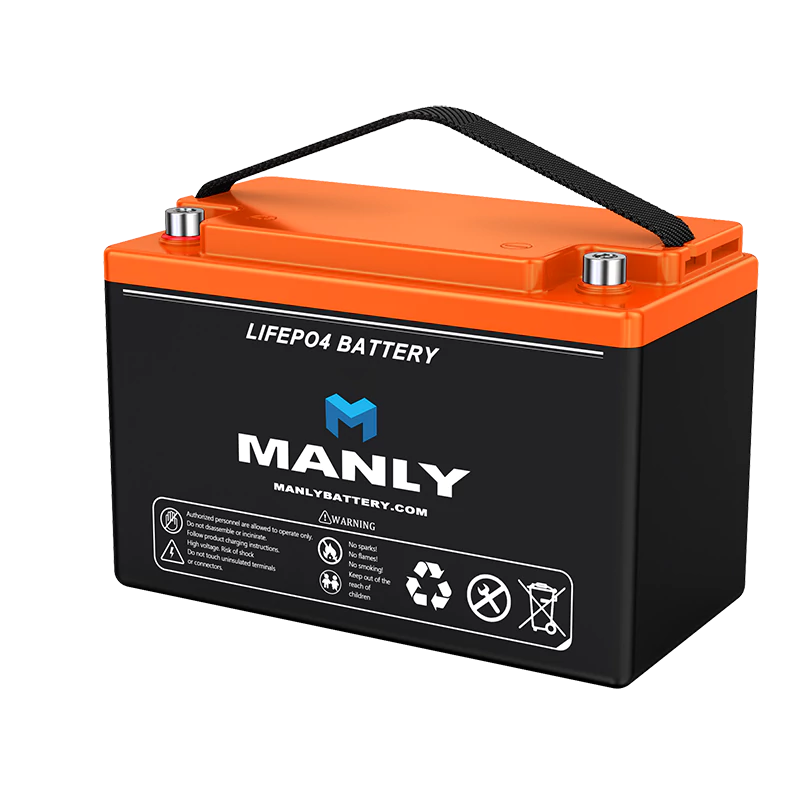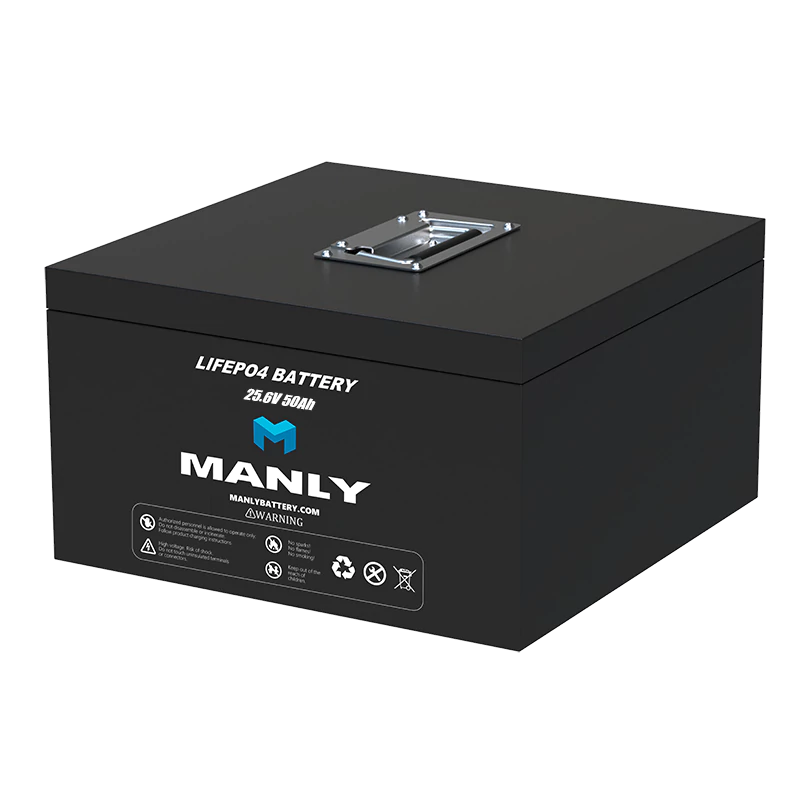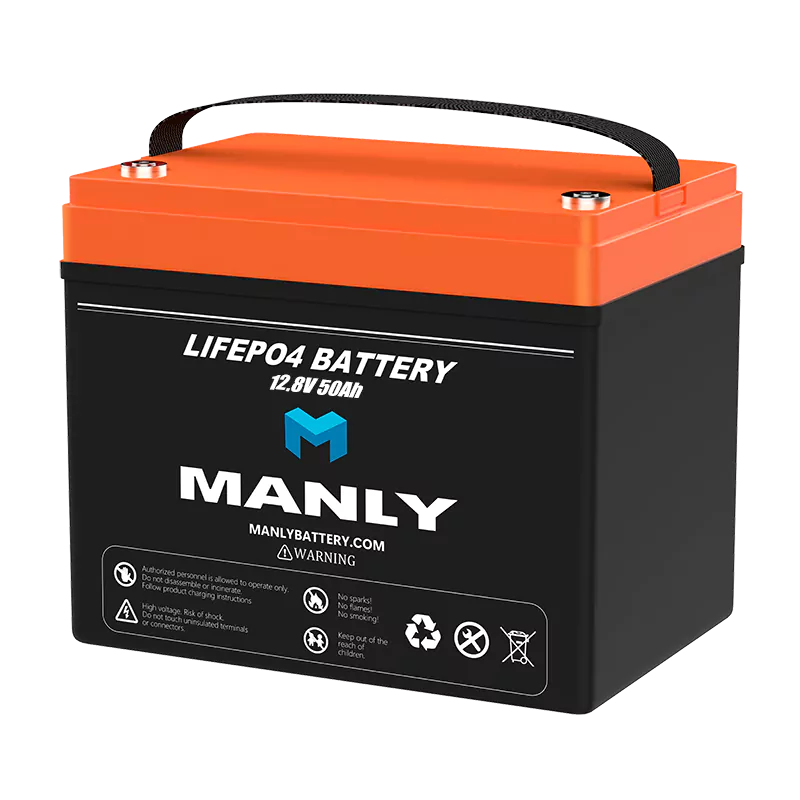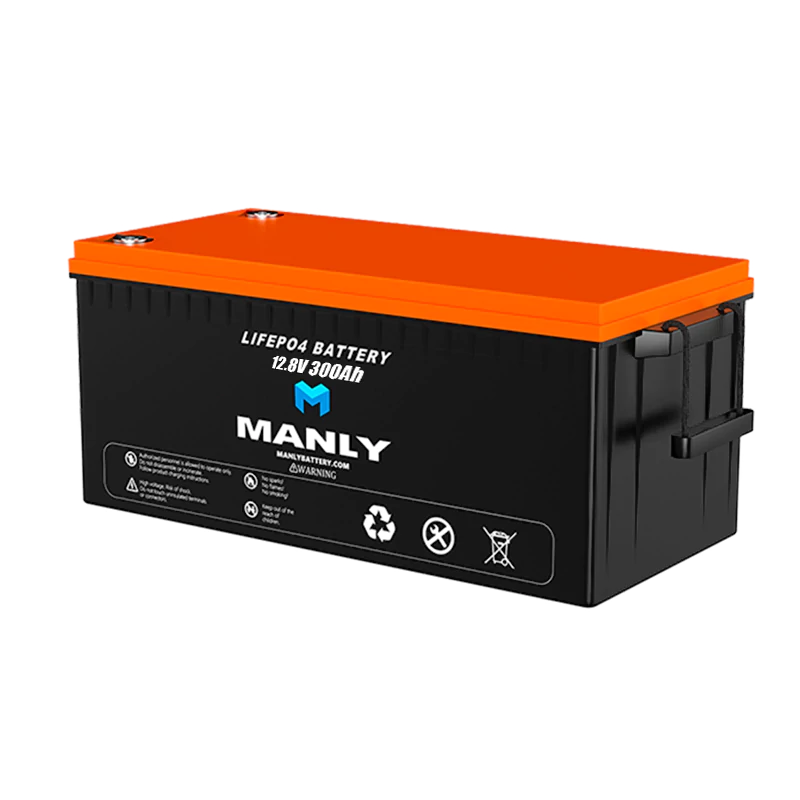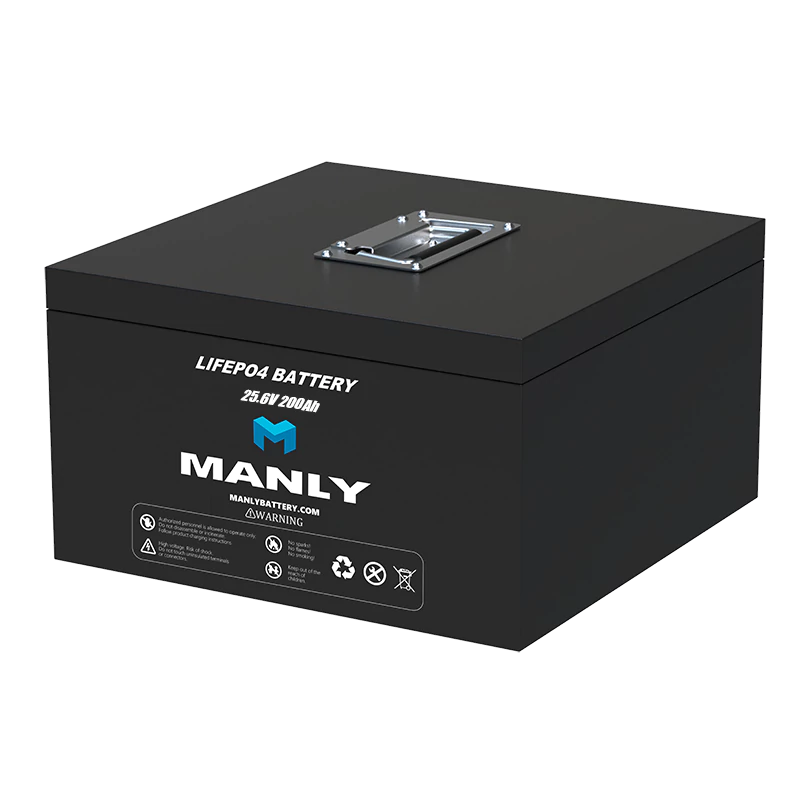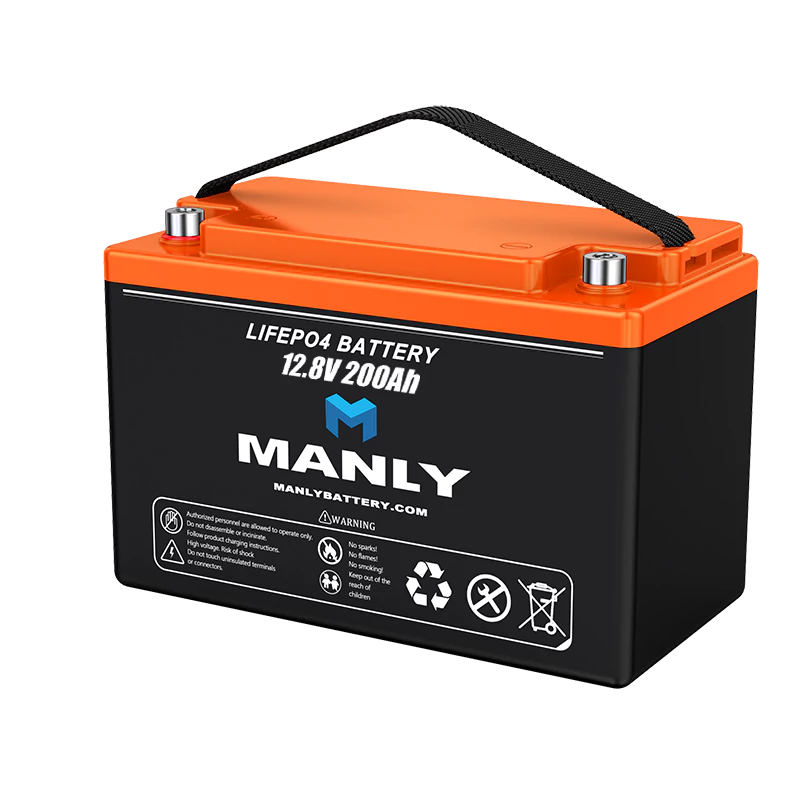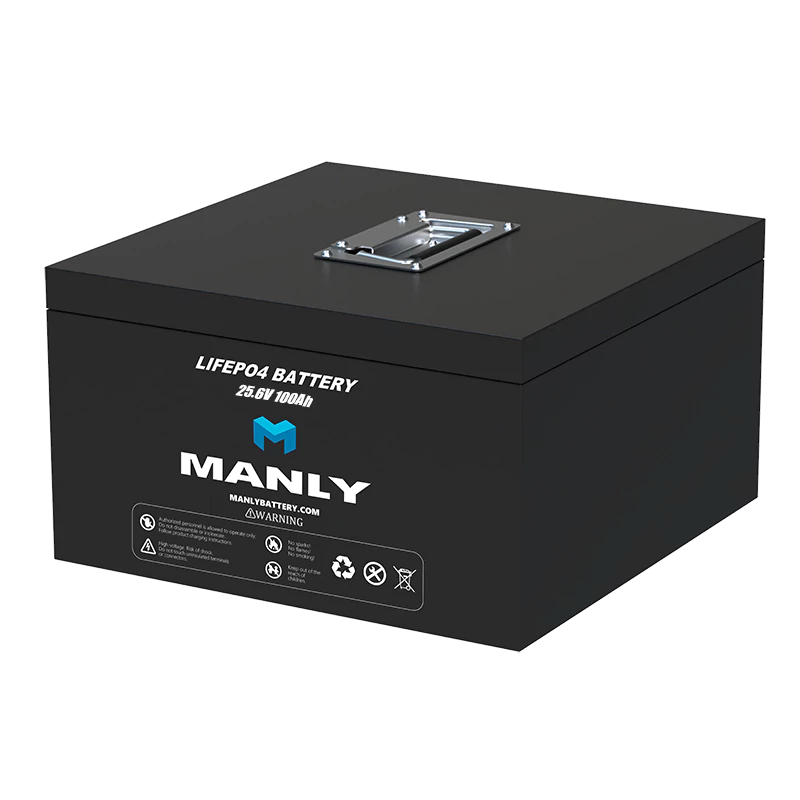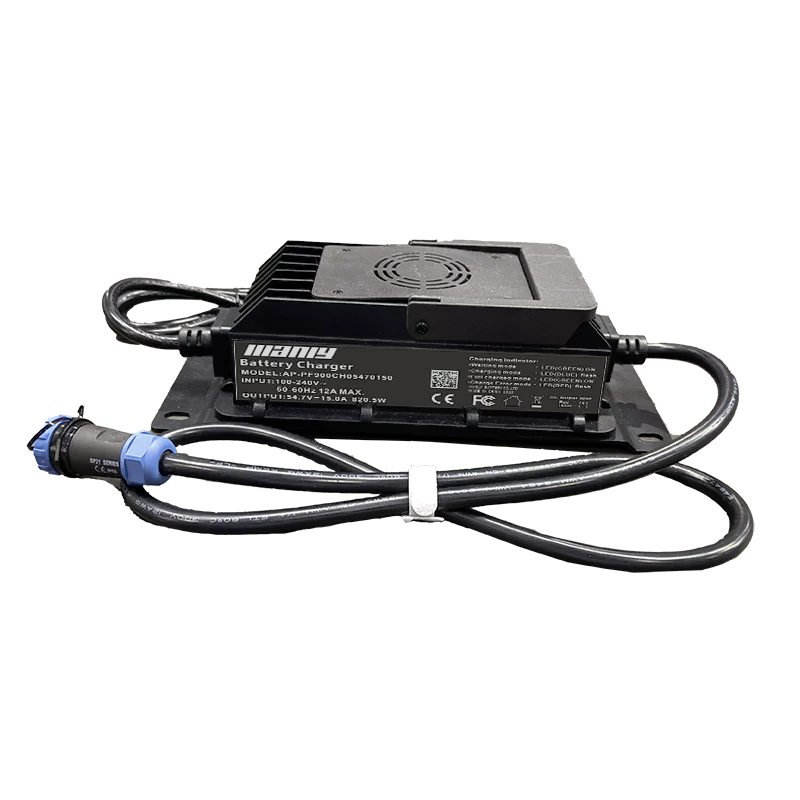LiFePO4 Batteries – Everything You Need to Know
Table of Contents
- LiFePO4 Batteries – Everything You Need to Know
- What are LiFePO4 Batteries?
- What are LiFePO4 Batteries Used For?
- Are LiFePO4 Batteries the Same as Lithium-Ion Batteries?
- What are the Benefits of LiFePO4 Batteries?
- Mounting LiFePO4 Batteries Sideways: Things to Consider
- LiFePO4 Batteries: The Safer Lithium Choice
- Understanding Battery Venting: Traditional vs. LiFePO4
- Why Do Some Batteries Need Venting?
- LiFePO4 Batteries: A Safer Alternative
- Addressing Thermal Runaway in LiFePO4
- Are LiFePO4 Batteries Prone to Overheating?
- Added Safety with Pressure Release Valves
- Choosing the Right Battery for the Right Job
- Weighing Venting Systems: The Rare vs. The Regular
- What About Battery Longevity?
- How Long Do Lifepo4 Batteries Last
- How to Test Lifepo4 Battery Capacity
- Why Choose MANLY Battery?
What are LiFePO4 Batteries?
Before we can explore the cavalcade of benefits that LiFePO4 batteries can provide their users, we need to first look at precisely what they are.LiFePO4 stands for lithium ion phosphate battery, or simply LFP for short. These batteries are a type of lithium-ion battery that is fully rechargeable, but which uses iron phosphate (FePO4) as the primary cathode material.Lithium batteries are nothing new. In fact, they have been around for close to three decades now. They were quickly found to be the most efficient means of charging smaller electronic devices such as laptop computers and cell phones.As beneficial as lithium-ion batteries were, some were found to be prone to overheating and there were a number of reports of them catching fire due to low levels of conductivity. This is largely why they weren’t used to make larger battery banks to power larger vehicles and devices.Experts discovered that, if they coated the particles in conductive material, and reduced their size, conductivity would increase. They began using lithium-ion phosphate as the cathode material, along with metallic-backed graphitic carbon electrode for the anode. They also altered the chemical composition and made them a whole lot more stable. And with that, the humble LiFePO4 battery was born.What are LiFePO4 Batteries Used For?
Contrary to popular belief, lithium-ion phosphate batteries are not used for smaller electronic devices, so don’t expect to find them replacing your smart phone battery anytime soon. There are a number of ways in which they differ from your standard lithium-ion battery, and we’ll get to those shortly. For now, however, we’ll look at some of the main ways in which a LiFePO4 battery can be applied.When compared with the typical lithium-ion batteries found in your everyday devices, lithium ion phosphate batteries have a much lower energy density, this makes them ideal for larger devices and products needing more power, including the following:- RVs and camper vans
- Electronic vehicles (EVs)
- Golf carts
- Electric buggies
- Bass boats
- Solar energy systems
- Electric bikes
- Electric motorcycles
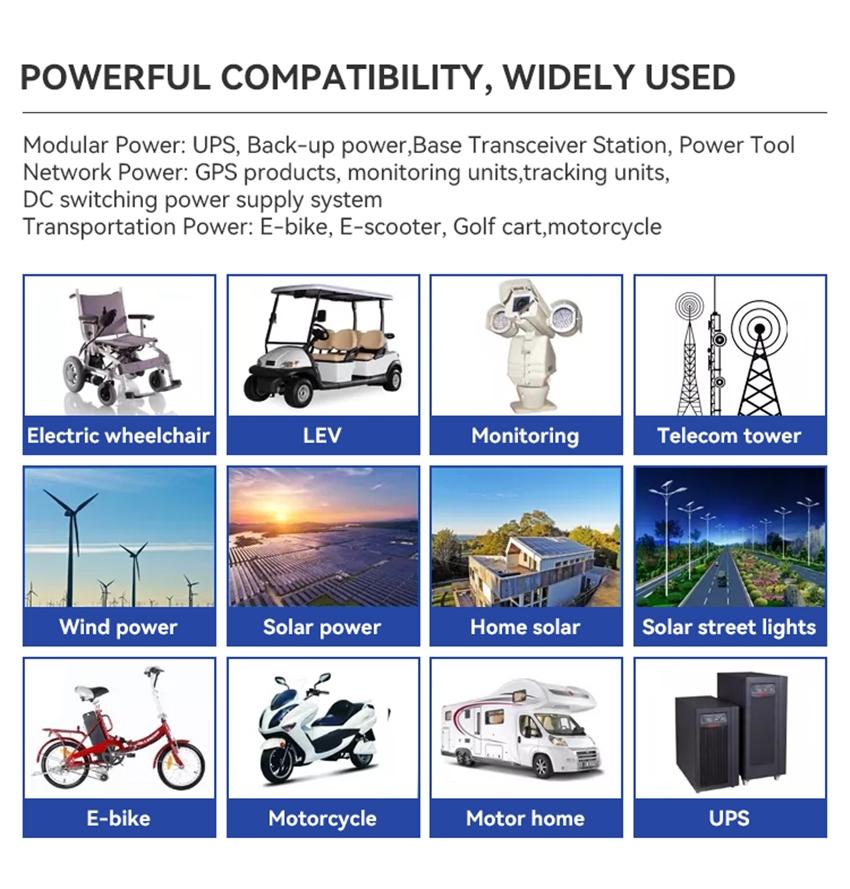
Are LiFePO4 Batteries the Same as Lithium-Ion Batteries?
As you can see from the above, LiFePO4 batteries are used primarily for much larger objects and devices, and are best-suited for products which require a greater power output.Standard lithium-ion batteries are better for smaller devices requiring less power. Again, laptops and smart phones and tablets are all perfectly suited for standard lithium-ion batteries.A LiFePO4 battery uses a newer form of tech to make them more stable and far less combustible. While both batteries are rechargeable, they feature very different charge cycles. A lithium-ion battery for example, may feature a large life cycle when charged, but it is not as impressive as that found as part of a LiFePO4 battery.Batteries using phosphate tech offer much longer charges meaning that the batteries hold their charge for longer and require less-frequent recharging than regular lithium-ion batteries.Lithium-ion phosphate batteries are also considered more eco-friendly than regular lithium-ion batteries as lithium iron phosphate is non-toxic, compared with the chemical compounds found within lithium-ion batteries.Basically, LiFePO4 batteries are more stable, less-combustible, require less charging, safer, and last up five times longer than lithium-ion batteries.What are the Benefits of LiFePO4 Batteries?
Put simply, LiFePO4 batteries are a new and improved version of regular lithium-ion batteries, with slightly different applications.As the world looks to become increasing sustainable and environmentally friendly, lithium-ion phosphate batteries look increasingly likely to become the norm as part of modern living.But what is it about LiFePO4 batteries that makes them so beneficial? Here’s a look at several key benefits of lithium-ion PO4 batteries as opposed to standard lithium-ion batteries:LiFePO4 batteries are much safer
One of the main reasons why lithium-ion phosphate batteries are considered to be so popular is down to the fact that they’re much safer than regular lithium-ion batteries.As mentioned, over the years we’ve seen a number of reports of lithium-ion batteries overheating and either catching fire, or even exploding in some cases. Needless to say, this is very serious and has had devastating consequences for users of them.Because lithium-ion phosphate batteries utilize the very safest lithium chemistry however, they are much, much safer. A LiFePO4 battery offers thermal and structural stability, meaning they can withstand extremely high temperatures and a lot of use, without being at risk of combusting. This is where it pays to purchase from a reputable battery supplier, as you can’t take any risks where safety is concerned.The batteries also offer self-regulating temperatures so, at room temperature, they remain cool and are not at risk of thermal runaway, even with rising or fluctuating temperatures.Another safety benefit of a LiFePO4 battery is the fact that the battery remains stable if short circuiting, exposed to humidity or extreme temps, or other hazardous situations. Providing you purchase from a trusted and reputable battery supplier, your lithium-ion phosphate battery should be considerably safer than a standard battery.A LiFePO4 battery offers fantastic performance
Another reason to purchase LiFePO4 batteries is simply down to the fact that they offer amazing performance and efficiency.If you’re fortunate enough to source these batteries from a reputable and professional battery supplier, you’ll find that they offer a wide range of benefits you never likely would have considered.For example, a LiFePO4 battery offers rapid recharging and can reach a full charge within two hours, and often even less than that.The self-discharge rate is also impressive, especially when compared with lead batteries. A lead battery for example, will see a self-discharge rate of around 30% per month. With LiFePO4 batteries however, the self-discharge rate is simply 2% per month, meaning they hold their charge incredibly well.LiFePO4 batteries also offer consistent power outputs, even when the battery charge is low.Lithium-ion phosphate batteries are eco-friendly
For people who are environmentally conscious, LiFePO4 batteries are hugely beneficial.Not only are they rechargeable, but more importantly still, they also contain non-toxic materials, they do not leak, plus they are recyclable as well.Add to this, the fact that they power electric vehicles and are therefore helping to reduce carbon emissions, and it’s easy to see why a LiFePO4 battery is considered one of the greenest forms of sustainable energy currently on the market.Small and compact
While not a particularly huge benefit, another reason why users of a LiFePO4 battery have been so impressed with this particular gadget is down to the fact that they’re small, compact, and lightweight.A typical LiFePO4 battery weighs 1/3 that of a lead acid battery, making it more user-friendly.The light weight means that the vehicles you use them in are lighter, so you consume less power and can enjoy better performance. Not only that, but as they’re smaller, they take up less room which means that they’re more convenient, especially when used on smaller vehicles such as small fishing boats perhaps?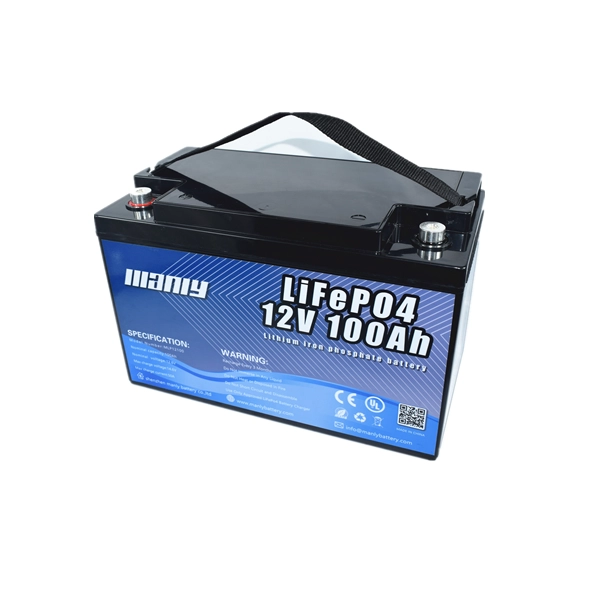
Mounting LiFePO4 Batteries Sideways: Things to Consider
Considering a side-mount for your LiFePO4 battery? While this type of orientation is feasible, it's essential to understand the critical factors to ensure the battery's longevity and optimal performance. Here's a quick guide:1. Stay Cool with Thermal Management
It's crucial to maintain an efficient heat dissipation mechanism for your LiFePO4 batteries, no matter how you mount them. Especially when placed on their side, the heat management strategy might need adjustments to counteract potential overheating issues.2. Rely on a Smart BMS
The Battery Management System (BMS) is your battery's intelligence. It oversees the battery's operations and ensures it runs smoothly. When changing the battery's orientation, make sure your BMS is adaptable, offering precise performance readings and robust protective features.3. Ensure Rock-Solid Stability
Mechanical stability isn't just about mounting. It's about ensuring the battery remains steady and safe, especially if oriented on its side. Guard against potential movements, vibrations, or any risks of tipping to prevent potential harm.4. Stick to the Expert's Advice
Always remember: the manufacturer knows best! Adhering to their guidance regarding mounting positions is non-negotiable. They've tested their products and offer insights into optimal installation practices. Avoid going rogue; it could impact the battery's performance, safety, and even its warranty.In conclusion, while side-mounting LiFePO4 batteries is an option, it's vital to approach the task with careful consideration, ensuring your battery delivers efficient, safe, and prolonged service.LiFePO4 Batteries: The Safer Lithium Choice
When it comes to battery safety, not all lithium batteries are created equal. Among them, LiFePO4 batteries stand out as a top-tier option. Here’s why:1. Heat Resistance:
Unlike some lithium variants, LiFePO4 batteries have a unique chemical composition that ensures they don’t overheat easily. This is a major safety advantage, as excessive heat can lead to dangerous scenarios.2. Stability in Different States:
The structural similarity between the charged and uncharged states of LiFePO4 ensures ions remain stable. This stability is crucial, especially during the natural oxygen flow that occurs in charge cycles or if something goes wrong.3. Iron vs. Cobalt:
The bond in iron phosphate (found in LiFePO4) is fundamentally stronger than in cobalt-based alternatives. So, if a battery is overcharged or physically damaged, LiFePO4 remains more resilient and less prone to breakdown, which could otherwise result in a perilous heat release.4. Fire Safety:
An essential aspect of LiFePO4's safety profile is that these cells are essentially fireproof. In situations like accidents or short-circuits, while other batteries might ignite or explode, LiFePO4 remains calm and collected.5. Endurance in Extreme Conditions:
Whether it's biting cold, blazing sun, or rugged landscapes, LiFePO4 batteries can withstand the harshest of environments without compromising their integrity or safety.6. Environmentally Friendly:
As a bonus, these batteries are green choices. They're not only non-toxic and non-polluting but also devoid of any rare earth metals.In a nutshell, if safety ranks high on your checklist and you operate in challenging environments, choosing LiFePO4 batteries is a wise move. They not only provide reliability but also an eco-friendly advantage.Understanding Battery Venting: Traditional vs. LiFePO4
Why Do Some Batteries Need Venting?
Traditional lithium-ion batteries can sometimes face a dangerous condition known as thermal runaway, where they overheat rapidly. This might even lead to fires or explosions. To prevent these scenarios, these batteries have built-in venting systems. These vents release gases and stop the buildup of dangerous internal pressures.LiFePO4 Batteries: A Safer Alternative
Enter LiFePO4 batteries, which have a distinct edge in terms of safety. Their core difference lies in their unique iron phosphate cathode. This chemistry not only diminishes the risk of thermal runaway but also negates the frequent necessity for venting, unlike their traditional counterparts.Addressing Thermal Runaway in LiFePO4
But what if there's a threat of thermal runaway due to issues like excessive charging, external heat, or accidental damages? Fear not. LiFePO4 batteries are equipped with modern safety mechanisms. They feature sophisticated battery management systems that keep a vigilant eye on these potential risks, ensuring they're kept in check and reducing the likelihood of any overheating incidents.In essence, if you're looking for a safer battery choice without the constant need for venting, LiFePO4 batteries stand out as a top contender. They're designed with both performance and safety in mind.Are LiFePO4 Batteries Prone to Overheating?
LiFePO4 batteries, known for their unique chemistry, exhibit an impressive level of stability. This drastically diminishes their likelihood of entering into thermal runaway – a state where batteries can get excessively hot. The direct benefit? They generally don't produce the kind of heat or gases that make venting a necessity.Added Safety with Pressure Release Valves
Even though these batteries usually don't need to vent, it's worth noting that some manufacturers incorporate pressure release valves in their design. Why? As a safeguard. If there's ever an extreme event like serious overcharging, these valves can expel gases, keeping the battery safe.Choosing the Right Battery for the Right Job
When determining whether venting is essential, it's crucial to consider how and where the LiFePO4 battery is used. A battery in an electric car, for example, might have distinct safety needs compared to one in a home's stationary energy system.Weighing Venting Systems: The Rare vs. The Regular
In some rare, harsh conditions, if a LiFePO4 battery faces abuse or dysfunction, the venting systems could come into play. But remember, these instances are exceptional, thanks to the battery's built-in safety attributes.On the flip side, when we think about home energy systems, LiFePO4 batteries usually exist in sealed systems. Venting isn't typically on the agenda, making them an ideal pick for domestic energy needs.What About Battery Longevity?
Here's the cherry on top: traditional lithium-ion batteries that vent often can see a shortened lifespan. However, LiFePO4 batteries aren't in the business of frequent venting. As a result, they tend to enjoy a more extended, more efficient life cycle.In a nutshell, if you're searching for a battery that combines efficiency, safety, and longevity, LiFePO4 stands out in the crowd.How Long Do Lifepo4 Batteries Last
What's the Typical Life of a LiFePO4 Battery?
LiFePO4 batteries, when handled right, can serve you consistently for a span of 5-10 years. It's worth emphasizing that the longevity of these lithium-iron phosphate batteries largely depends on how they're taken care of. For these batteries, the adage "treat them right, and they'll treat you right" holds true. Overcharging is a surefire way to cut their life short.Crunching Charge Cycles for LiFePO4 Batteries
LiFePO4 batteries proudly boast a remarkable 3,000-5,000 charge cycles at 80% depth of charge. Just to put this in perspective, other common batteries like lead-acid ones only get to around 1,000 charge cycles. And when we talk about a 'charge cycle', we're referring to the full process where a battery is charged to its maximum and then discharged completely.Still, it's essential to remember that several factors can either stretch or trim down the number of charge cycles a battery can go through. So, always be in the know.One standout feature of LiFePO4 batteries is their slower rate of depletion. They might have a steeper initial price tag than some other battery types, but the long-term value they provide is unbeatable.Zooming Out: The Lifespan of General Lithium Batteries
Lithium batteries, in their myriad forms, can last from just a couple of years to an impressive decade or more. The more budget-friendly ones might give you anywhere from 500 to 3,000 life cycles. In contrast, the elite Lithium Iron Phosphate (LFP) batteries can deliver a staggering 3,500 to 4,000+ cycles.It's also vital to recognize that several external elements can either boost or hinder your battery's performance and overall life. Storage conditions matter a lot. For maximum battery longevity, always store them in places shielded from direct sunlight, heat, and moisture. And yes, when it's time to juice up your battery, always stick to the guidelines given by the manufacturer. Avoid overcharging and be wary of any setup that doesn't seem right. A well-maintained battery isn't just about durability; it's about maximizing value for every dollar spent.How to Test Lifepo4 Battery Capacity
Understanding the Basics:When determining the capacity of a LiFePO4 battery, there are standard approaches most users follow. Typically, it begins by fully charging the battery, then draining it down to its cutoff voltage. Even though LiFePO4 battery specs often mention a standard charge and discharge current of 0.5C (meaning a 100Ah battery should be tested using 50Ah), it's crucial to know that LiFePO4 battery capacity isn't swayed by discharge current. So, you're not bound to use only 0.5C for testing. For larger batteries, like the LF280N (280Ah), creating a testing environment of 140A can be challenging.Method 1: Real-World Application Testing
How it Works: Use your equipment as the load to gauge battery capacity.Pros: Quick, cost-effective. Cons: Slight margin of error.Steps to Follow:- Charge the battery fully.
- Hook it up to the load device.
- Note the time from when the device starts until the battery power cuts off.
- Use the formula: Battery capacity = Equipment operating current x Operating time.
Method 2: Meter Measurement Using a Dummy Load Capacity Tester
How it Works: This tester provides a more precise measurement of battery capacity.Steps to Follow:- Ensure the battery is fully charged.
- Connect it to the dummy load capacity tester and input the load parameters.
- Once the battery hits its cutoff, read the tester's measurements.

